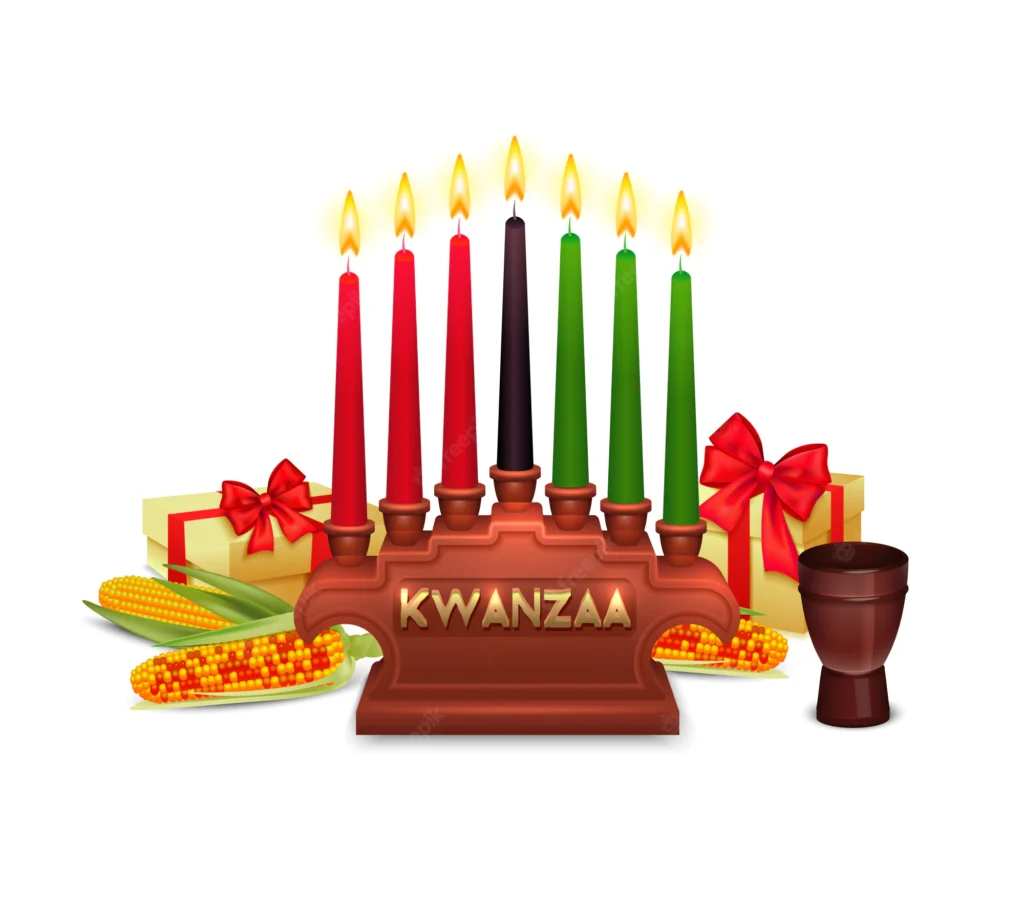
A week-long celebration of African culture and traditions, Kwanzaa. Every year, it takes place between December 26 and January 1. This holiday was introduced by the African-American leader Maulana Karenga, and it was originally observed between December 1966 and January 1967.
Is the First Day of Kwanzaa a Public Holiday?
Due to the fact that Kwanzaa (first day) coincides on the same date as Christmas Day in 2022, a public holiday in 49 states and one federal district, businesses and schools may be closed on that day.
What Carry Out People?
It is a celebration that celebrates the customs and cultures of individuals who are of African descent. People from several African nations and their descendants celebrate it. it is a week-long festival that culminates in a feast and gift-exchanging. Candles are lighted, and libations are poured throughout the festivities. The ritual pouring of a drink as a gift to a god is known as a libation. A wooden unity cup is used to serve drinks at this day.
In addition to singing and drumming, a celebration frequently involves contemplation on the Pan-African colours of red, green, and black as well as a discussion of some element of African history. Women frequently dress traditionally and in vivid colours. During the holidays, several cultural groups host special exhibitions of artwork with African influences or present live performances.
At first, the community did not include any traditions from other holidays into its festivities. However, combining Kwanzaa traditions with Christmas or New Year’s festivities has grown in popularity recently. An example might be a family who displays both a candlestick and a Christmas tree in their house. As a result, they are able to incorporate both Christian and African-inspired rituals into their life throughout this season.
Public Life
The days Kwanzaa happens on, aside from New Year’s Day (January 1), are not recognised as public holidays. This is mostly a private holiday celebrated by people, families, and small groups of people in the area. It lies between Christmas and New Year’s Day, though, so some companies and organisations could be closed or offer less services at that time. It could be a good idea to call ahead if you need to conduct business with a firm or group with an African-American focus during this time to make sure they are open as normal.
Symbols
The seven candles, the candle stick holding seven candles, the ears of corn, the Kwanzaa flag, and a poster depicting the seven Kwanzaa principles are the main symbols of the holiday. Other symbols include a mat used to lay out the supplies for the celebration and the unity cup used to pour libations. The seven guiding principles of it are: co-operative economics, purpose, creativity, earth, and unity. They also include collaborative labour and accountability.
Red, black, and green are the traditional colours. Three blocks, one in each of these hues, make up the Kwanzaa flag. The seven candles are divided into three red, three green, and one black. Each candle stands for a different value. The candle holder was designed to resemble the Ashanti royal throne and was carved from a single piece of wood.
Background
The first celebrations took place between December 1966 and January 1967. Maulana Karenga suggested the holiday to offer people of African origin a day to honour their own cultural history and the fundamental principles of family and community. Although it was first considered a rival to Christmas and so potentially anti-Christian, many people today follow parts of both holidays.
The United States Postal Service recognised Kwanzaa by producing stamps featuring a component of the event in 1997 and 2004. Synthia Saint James created the stamp in 1997, which featured an African-American family taking in the festivities. Daniel Minter created the stamp in 2004 and it has seven characters that stand in for the Kwanzaa’s seven guiding principles. it immediately became well-known. Nearly five million African-Americans, or roughly 13 percent of the population, are currently thought to participate in some form in the celebration.First-day observances.
First-day observances of Kwanzaa
| Year | Weekday | Date | Name | Holiday Type |
| 2017 | Tuesday | 26 Dec | Kwanzaa (first day) | Observance |
| 2018 | Wednesday | 26 Dec | Kwanzaa (first day) | Observance |
| 2019 | Thursday | 26 Dec | Kwanzaa (first day) | Observance |
| 2020 | Saturday | 26 Dec | Kwanzaa (first day) | Observance |
| 2021 | Sunday | 26 Dec | Kwanzaa (first day) | Observance |
| 2022 | Monday | 26 Dec | Kwanzaa (first day) | Observance |
| 2023 | Tuesday | 26 Dec | Kwanzaa (first day) | Observance |
| 2024 | Thursday | 26 Dec | Kwanzaa (first day) | Observance |
| 2025 | Friday | 26 Dec | Kwanzaa (first day) | Observance |
| 2026 | Saturday | 26 Dec | Kwanzaa (first day) | Observance |
| 2027 | Sunday | 26 Dec | Kwanzaa (first day) | Observance |
Here are some images to share with your friends & Family.
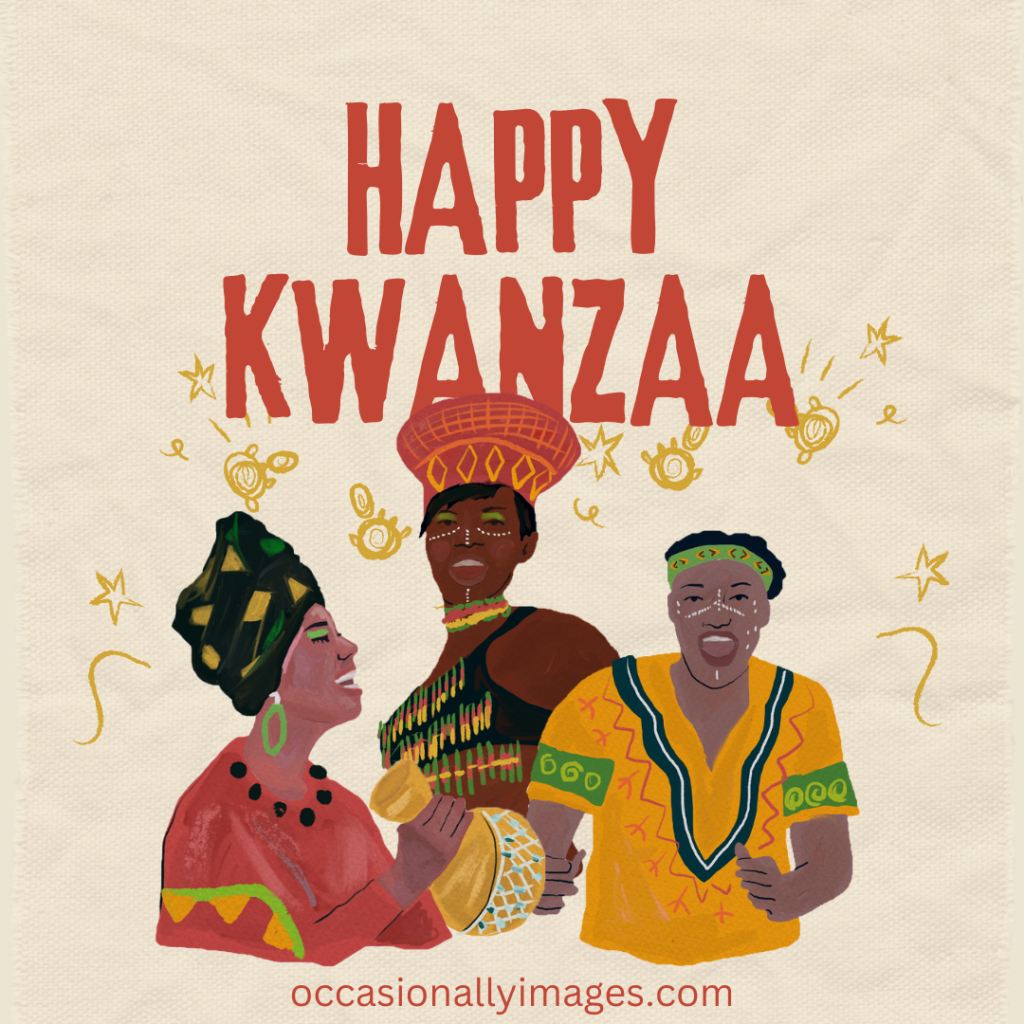
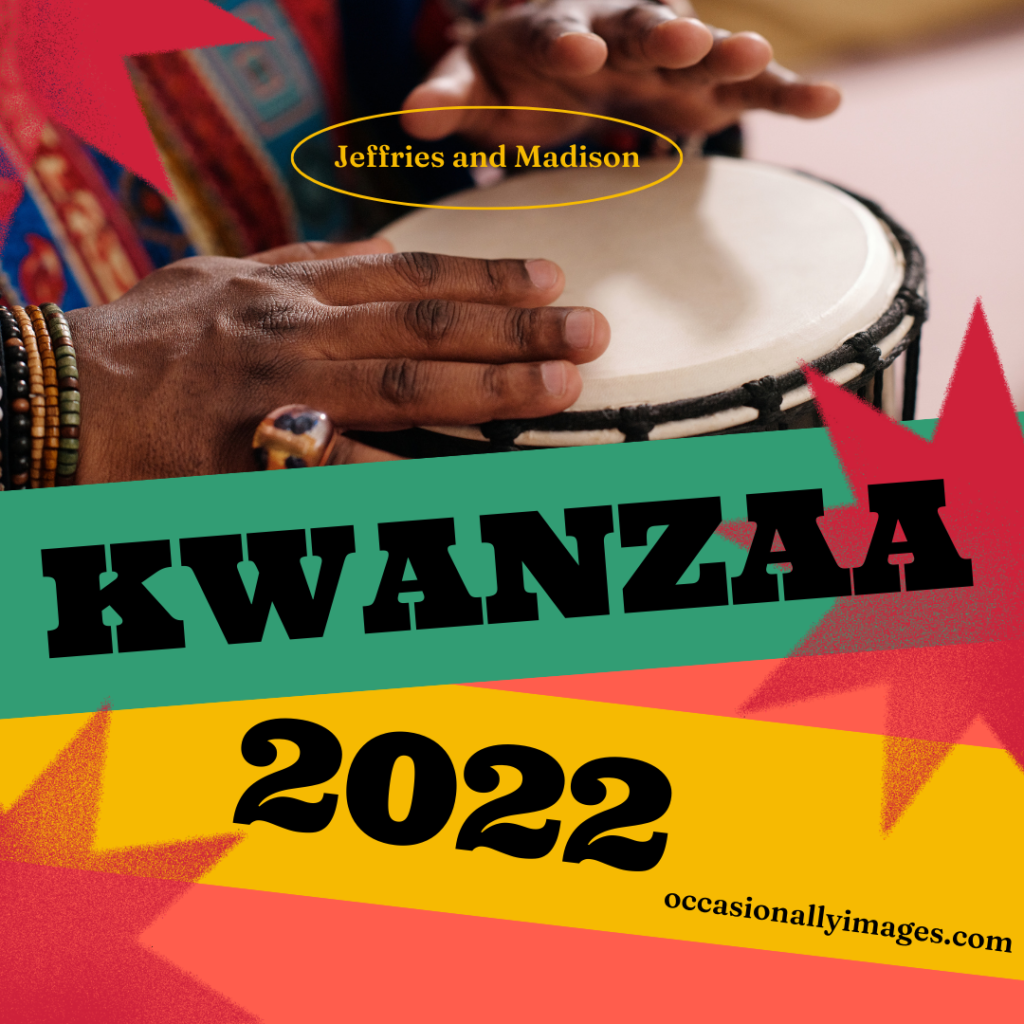
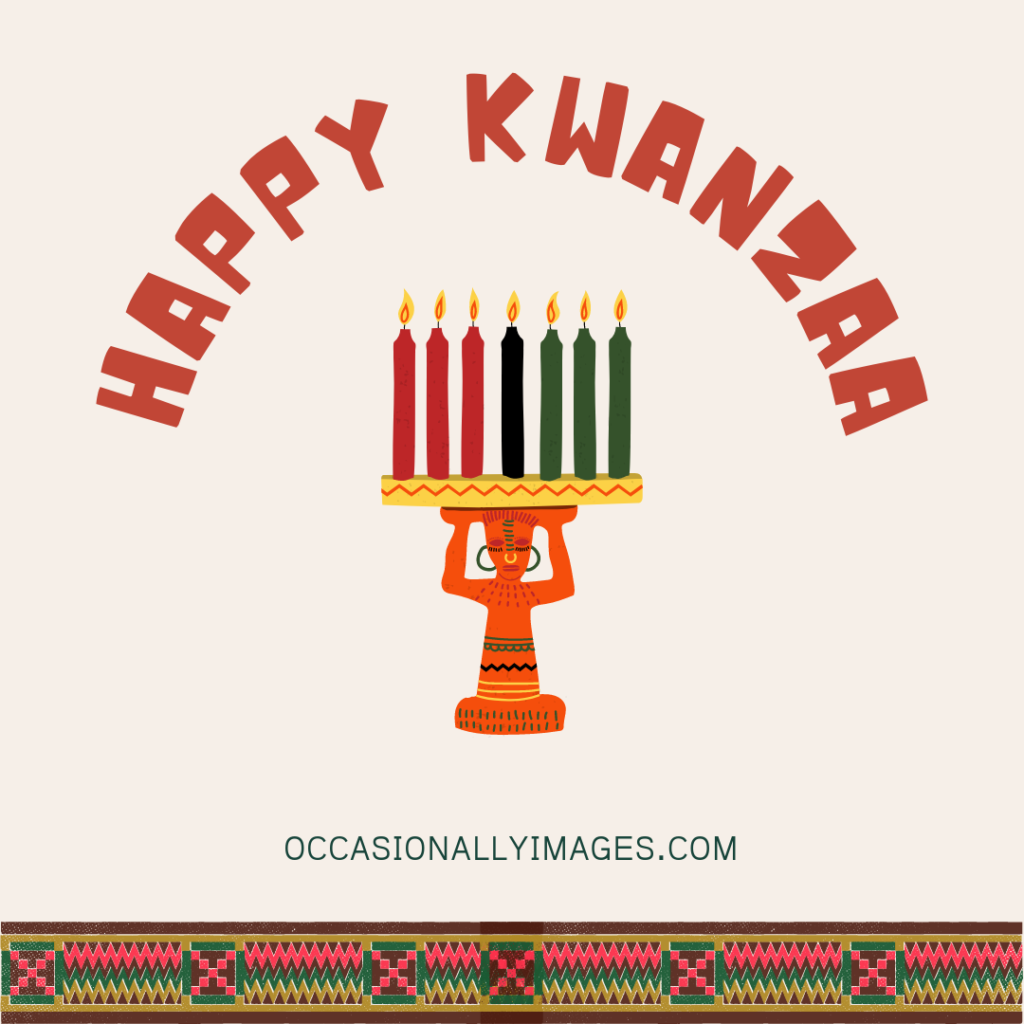
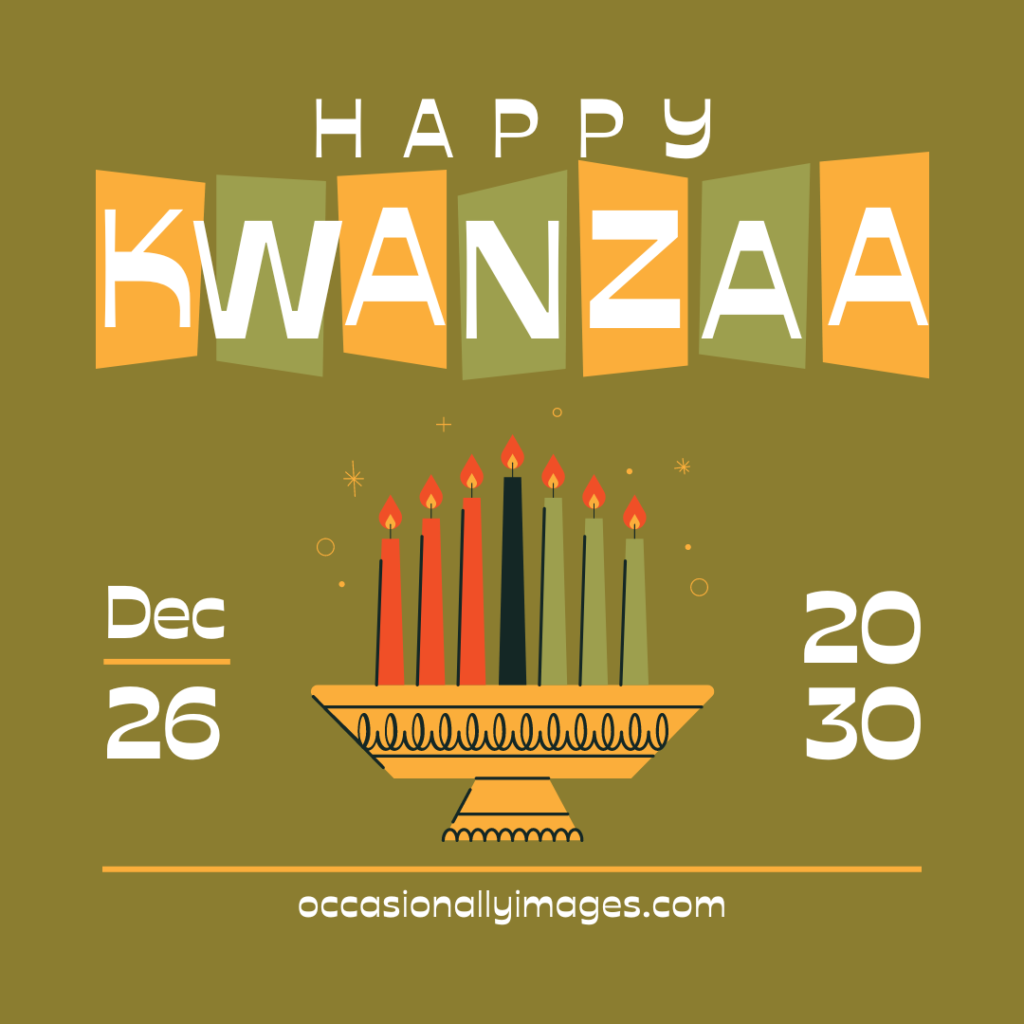
If you want to know about the New Year’s Eve history You can check by clicking HERE.

